
The traditional sport of Sumo, an indispensable part of discussing Japanese culture, features the incredible power of wrestlers colliding and a unique, palpable energy that envelops the arena! If you're interested in Japanese culture, you've probably thought about watching a sumo tournament at least once, right? But perhaps you've also thought, "It looks difficult..." or "It's my first time, so I don't know what to do..." Many people probably feel this way.
That's why we actually went to the "Ryogoku Kokugikan," the sacred place of sumo, to bring you a match report from the "Premium Seats" sold by JTB specifically for tourists in Japan! On top of that, we thoroughly investigated the secrets to enjoying a sumo match 120%, even for first-timers.
After reading this article, you'll know everything from how to buy tickets and choose your seats to spectator etiquette and the highlights of sumo. Now, let's dive into the exciting world of sumo together!
Sumo: A National Sport that Embodies the Essence of Japanese Culture
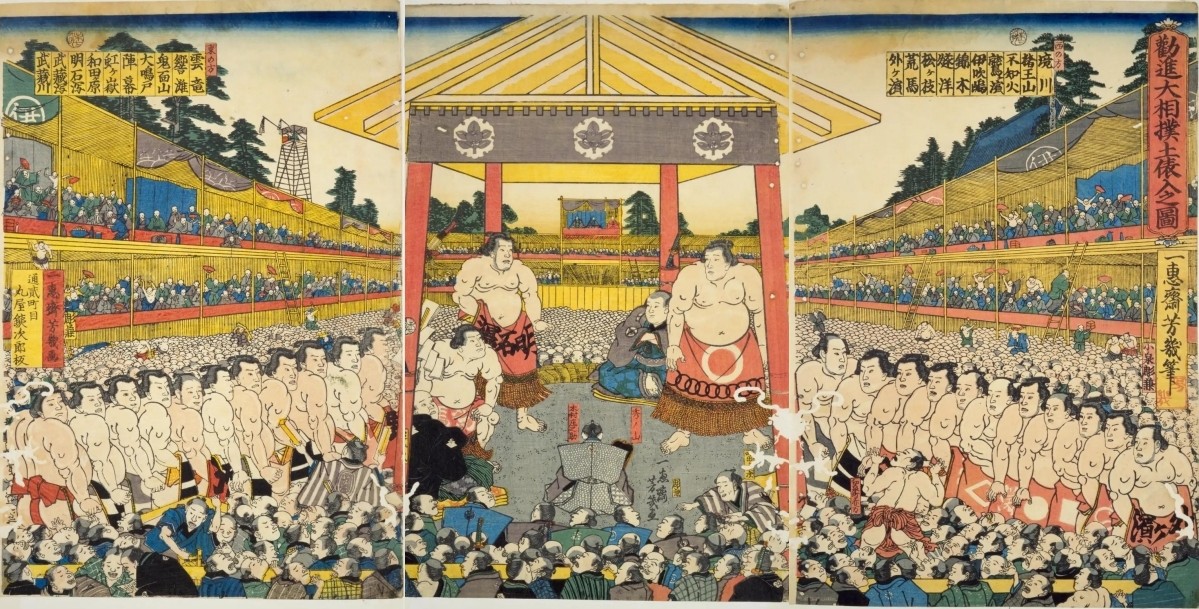
Sumo is not just a sport. As Japan's "national sport," it is a crystallization of Japanese history, culture, and spirit.
Basic Concepts of Sumo
Sumo is a traditional Japanese martial art with roots in Shinto. Two sumo wrestlers (rikishi) grapple in a circular ring (dohyo), and victory is decided by forcing the opponent out of the ring or making any part of their body other than the soles of their feet touch the ground.
Rikishi wear a loincloth called a "mawashi" and collide with trained bodies and spirits. Their appearance can truly be said to embody Japan's "Bushido."
History and Cultural Significance of Sumo
The origins of Sumo are extremely ancient, said to date back to the mythical era over 1,500 years ago. Sports similar to sumo, which developed from tests of strength and grappling, have been practiced around the world.
Texts such as the "Kojiki" and "Nihon Shoki," compiled in the 8th century, depict what are believed to be the origins of sumo-like competitions, which were later performed as rituals to pray for abundant harvests. During the Heian period, it became a court event, and during the samurai era from the Kamakura to Sengoku periods, it was even incorporated as a form of training. In the Edo period, it gained popularity as entertainment for the common people, alongside Kabuki.
Current professional sumo is organized by the Japan Sumo Association in tournaments called "Honbasho," which are held six times a year. The outcome of these tournaments changes the rikishi's rank (banzuke), and rikishi dedicate themselves daily to reaching the highest rank of "Yokozuna."
Sumo is not merely a competition; it still strongly retains its aspect as a sacred ritual. The dohyo is a sacred place, and rikishi engage in sumo on it with a sense of offering it to the gods. Furthermore, gestures performed before the match, such as "shiko" and "chirichozu", are also said to carry sacred meanings.
Basic Knowledge for Watching Sumo: Venue, Tickets, and Choosing Seats
For your first sumo experience, the first things you'll probably wonder are "where" and "how" to watch.
About the Venue (Honbasho)
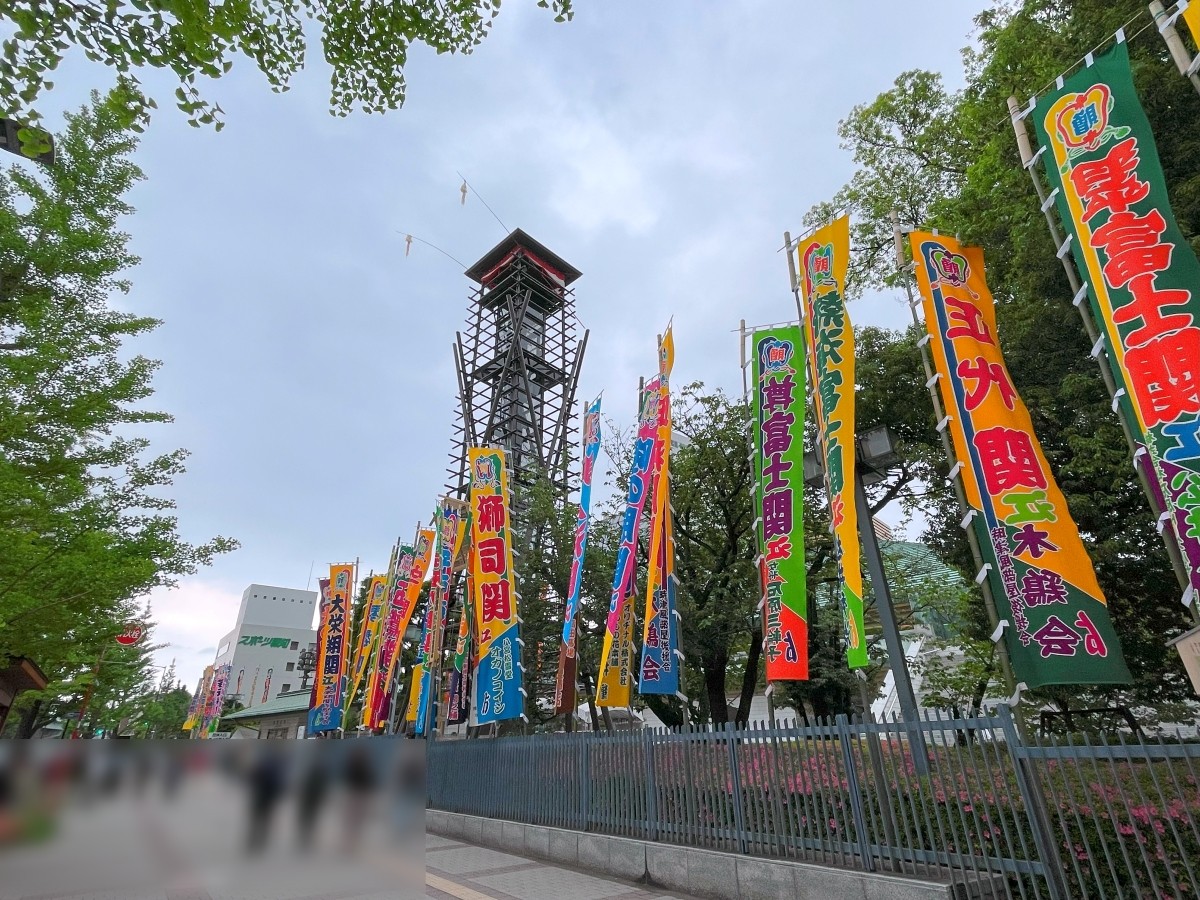
Sumo's official tournaments, called Honbasho, are held six times a year. In addition to these official Honbasho, there are also exhibition tours (Jungyo provincial tour) that travel around Japan and have more of an event-like character.
- The January Tournament: Ryogoku Kokugikan【Tokyo】
- The March Tournament: EDION Arena Osaka (Osaka Prefectural Gymnasium)【Osaka】
- The May Tournament: Ryogoku Kokugikan 【Tokyo】
- The July Tournament: IG Arena【Aichi】
- The September Tournament: Ryogoku Kokugikan【Tokyo】
- The November Tournament: Fukuoka Kokusai Center【Fukuoka】
FUN! JAPAN editor visited the Ryogoku Kokugikan in Tokyo, which is the sacred place of sumo and a permanent, dedicated sumo facility. It's incredibly accessible, just a 2-minute walk from JR Ryogoku Station. The surrounding area also has many sumo-related restaurants and souvenir shops, offering plenty of spots to enjoy before and after the matches.
How to Purchase Tickets
Sumo tickets are highly popular, and it can be difficult to get them, especially for weekend matches and the Senshuraku (final day). Therefore, we recommend purchasing them as early as possible.
The main purchase methods are as follows:
1. Purchase from Official Ticket Agencies: This is the most reliable method, but general sales only begin after three stages of pre-sale lotteries: the official sumo fan club lottery, Ticket Sumo pre-sale lottery, and Ticket Pia pre-sale lottery.
- Japan Sumo Association Official Site 👉 Click here
- Japan Sumo Association Official Sales Site "Ticket Oosumo"👉 Click here
- Ticket Pia 👉 Click here
2. Purchase from Sumo Information Centers (Sumo Chaya): There are 20 information centers inside the Kokugikan. In the Edo period, each had its own trade name and was called a "tea house". They can arrange not only admission tickets but also food such as bento boxes and original souvenirs. It's a bit more expensive, but they also provide support for watching the matches, so you can feel at ease.
- Sumo Information Center Official Site 👉 Click here
3. Hotel and Travel Agency Package Tours: Some package tours include tickets, hotel accommodations, and transportation. There are also tours designed for foreign tourists.
- SUNRISE TOURS JTB👉 Click here
💡FUN! JAPAN Tips
Most tickets are sold out during the pre-sale lotteries, so certain seat types and dates may be sold out by the time of general sales. The official fan club has a free membership option, so it might be worth registering just in case.
Official Sumo Fan Club Official Site👉 Click here
Types of Seats and How to Choose
There are many different types of seats at the Kokugikan, each with its own charm.
Tamari Seats
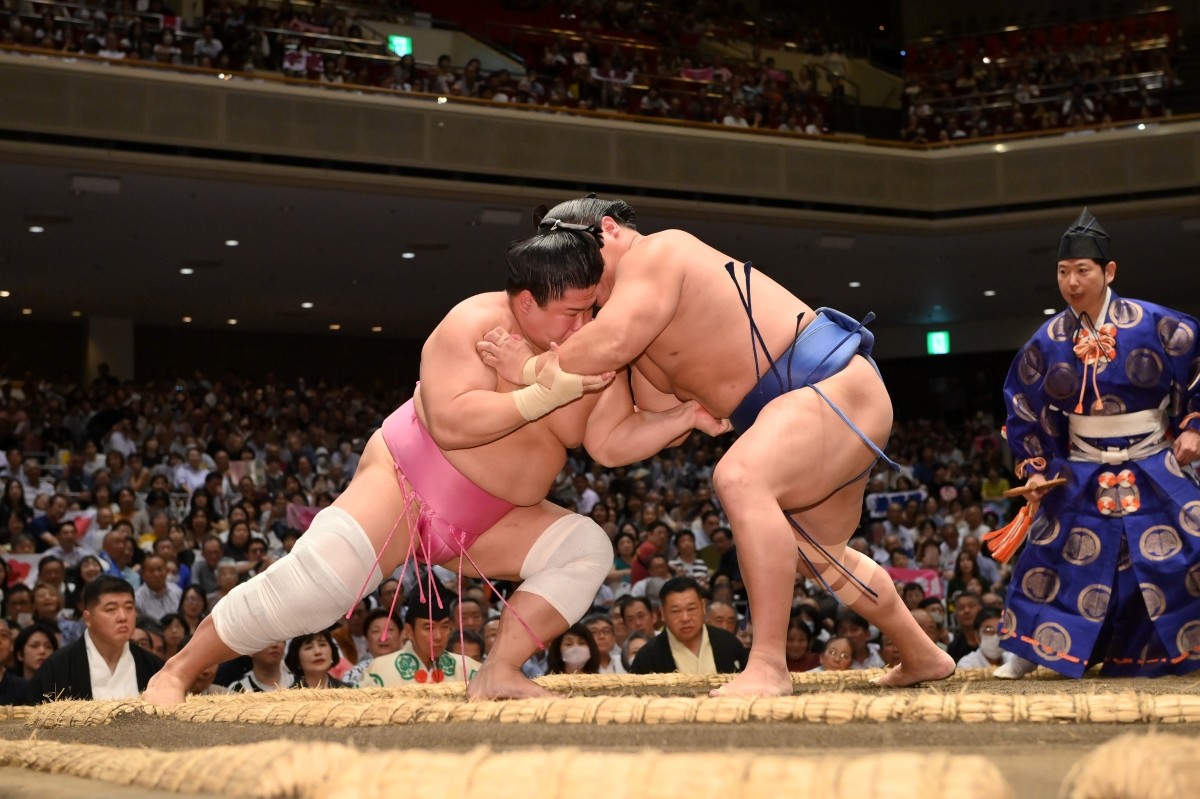
These are the front-row seats located right next to the ring, commonly known as "sunakaburi" (literally, "sand showers"). You can hear the wrestlers breathing and feel the full intensity of the matches up close. However, there's a risk of wrestlers falling out of the ring and into the audience, so these seats can be dangerous. Eating, photography, and mobile phone use are prohibited, making this a seat best suited for seasoned sumo fans.
Masu Seats
These are traditional Japanese-style spectator seats where you remove your shoes and sit on floor cushions (zabuton). Designed for four people, they're ideal for families or groups. You can bring your own bento lunch or tea and enjoy the event like a mini picnic. These popular seats let you soak in the uniquely Japanese atmosphere of the Kokugikan.
Chair Seats
These are standard stadium-style seats where you sit in chairs. They’re the most common and beginner-friendly option. Even seats higher up offer a good view of the entire ring, allowing you to follow the flow of the matches. Some chair seats at the Kokugikan come with small folding tables, so you can also enjoy food and drinks.
💡FUN! JAPAN Tips
If it’s your first time attending, we recommend choosing either box seats or chair seats. Box seats let you experience the traditional Japanese atmosphere, while chair seats provide a more casual and comfortable way to enjoy the event. Choose the style that best suits you!
Premium Seats
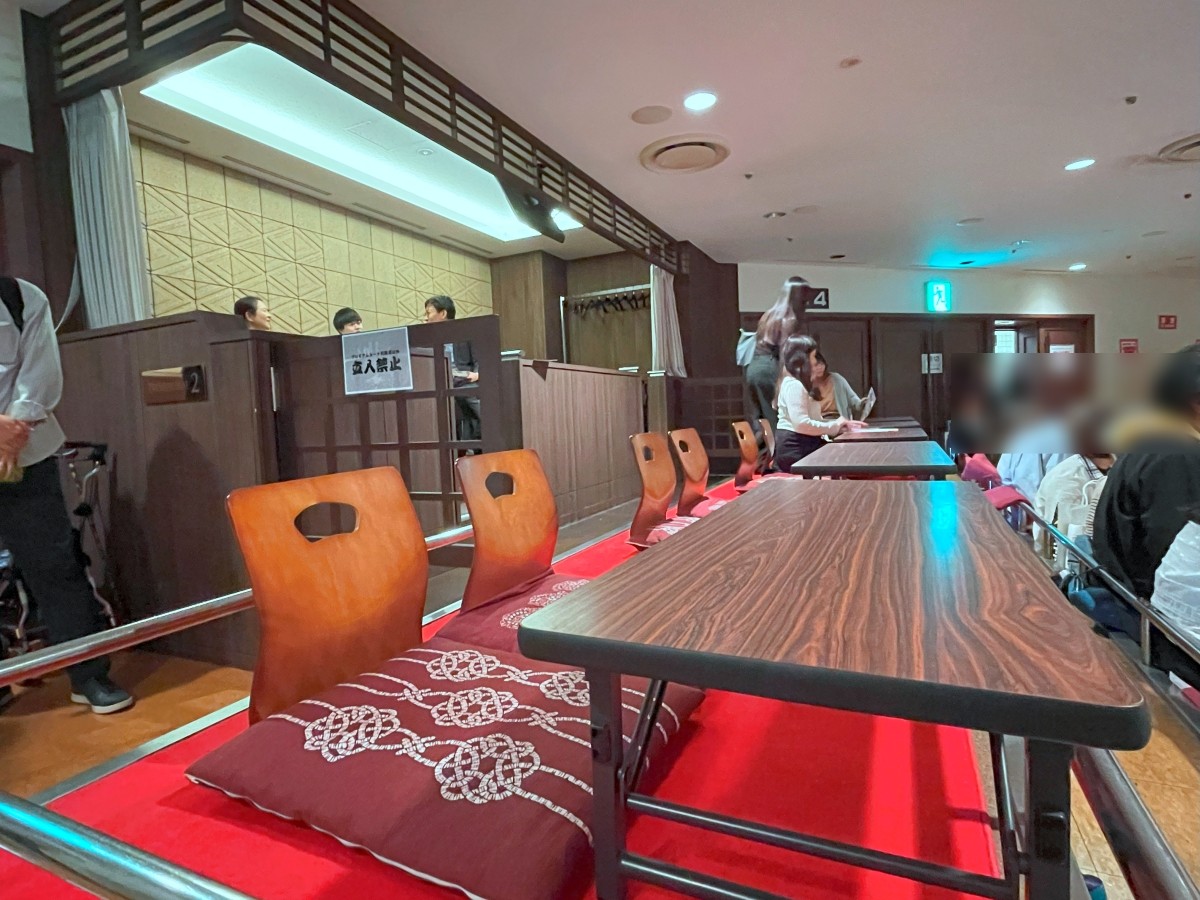
"Premium Seats" are group seats for 20 people, combining two front box seats and seven masu seats in the Ryogoku Kokugikan. There are only two such rooms available, one of which is sold by JTB.
Sumo Match Viewing Report from the “Premium Seat” at Ryogoku Kokugikan
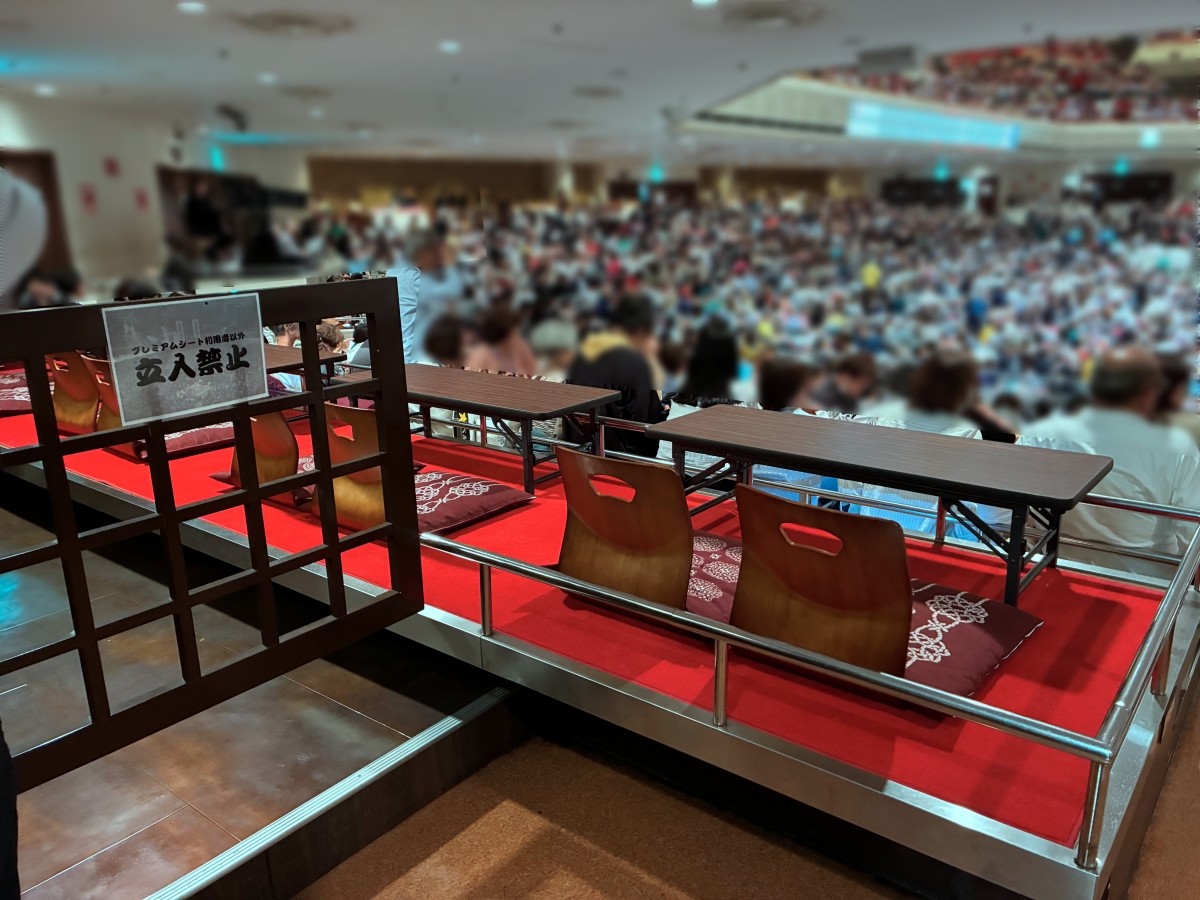
On this day, FUN! JAPAN editor attended a sumo tournament at Ryogoku Kokugikan, enjoying the experience from the “Premium Seat.”
The front masu seats feature tables and floor chairs, allowing you to comfortably enjoy the energetic atmosphere around you. Although the seats are enclosed by frames, they are spacious and you can take off your shoes and relax, offering a uniquely Japanese experience. Spreading out your bento lunch and cheering along with others nearby is the true charm of the masu seats!
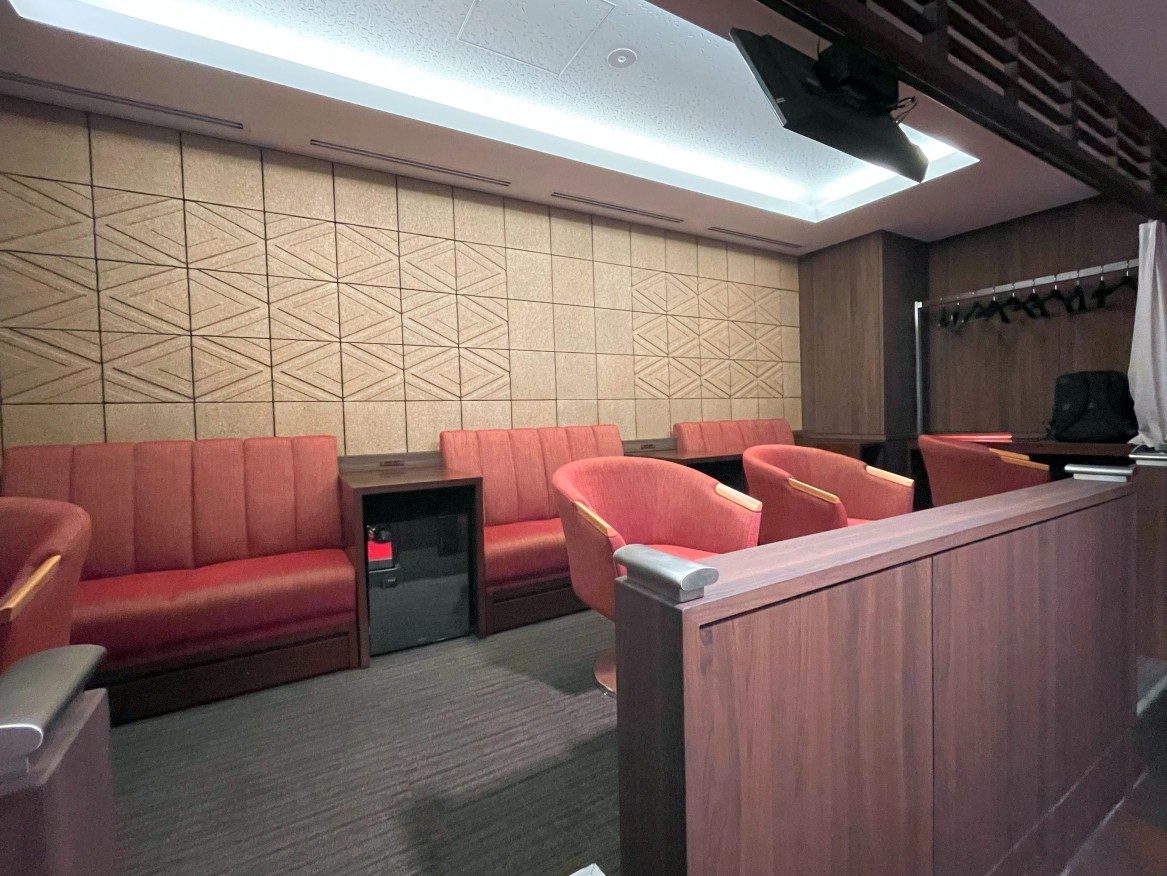
Behind the masu seats are the “box seats” (sofa-style seats) where you can stretch your legs without removing your shoes. They come equipped with clothes hangers, safes, and sofa seating, plus curtains for privacy, making it a comfortable and private space.
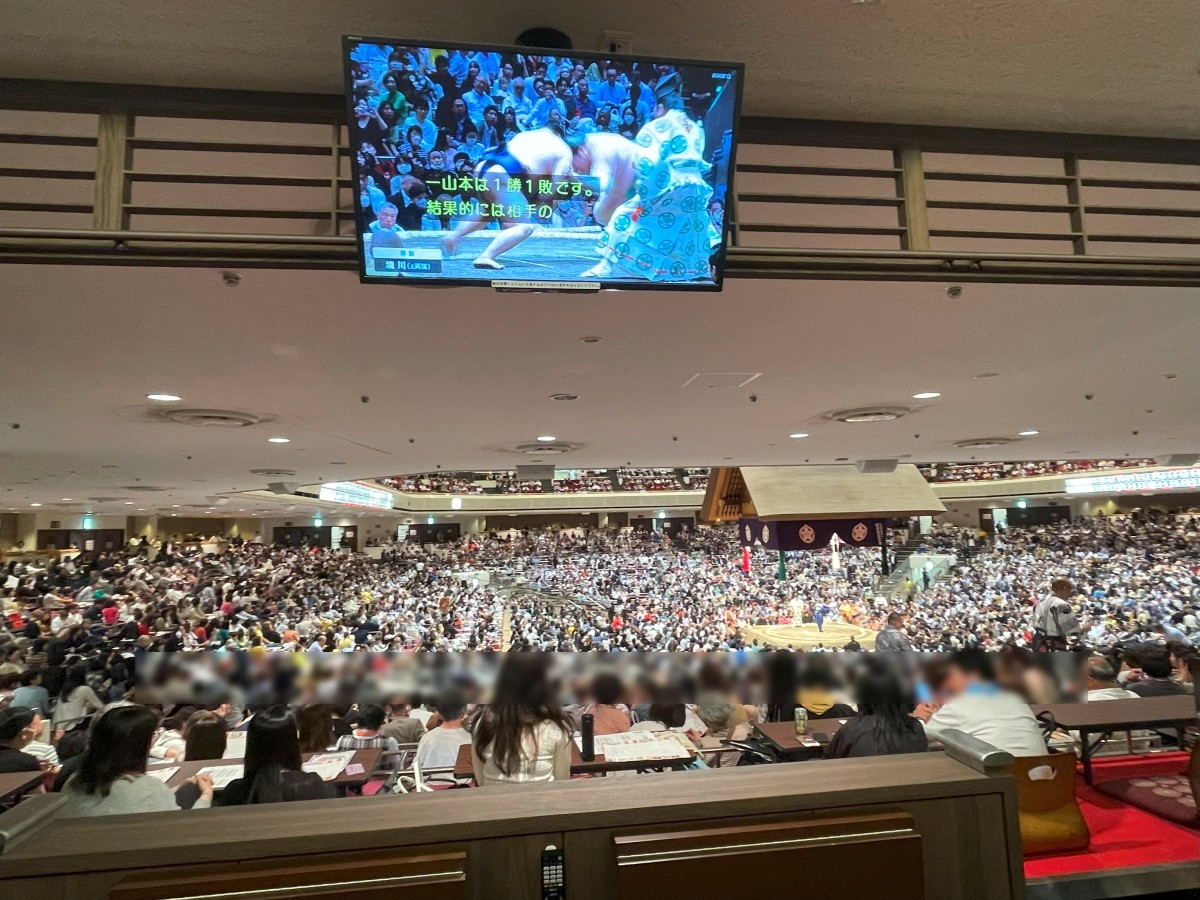
Overhead monitors display NHK’s live broadcast. While you can feel the real-time excitement at the venue, the close-up shots and detailed information on the screen make following the action even easier.
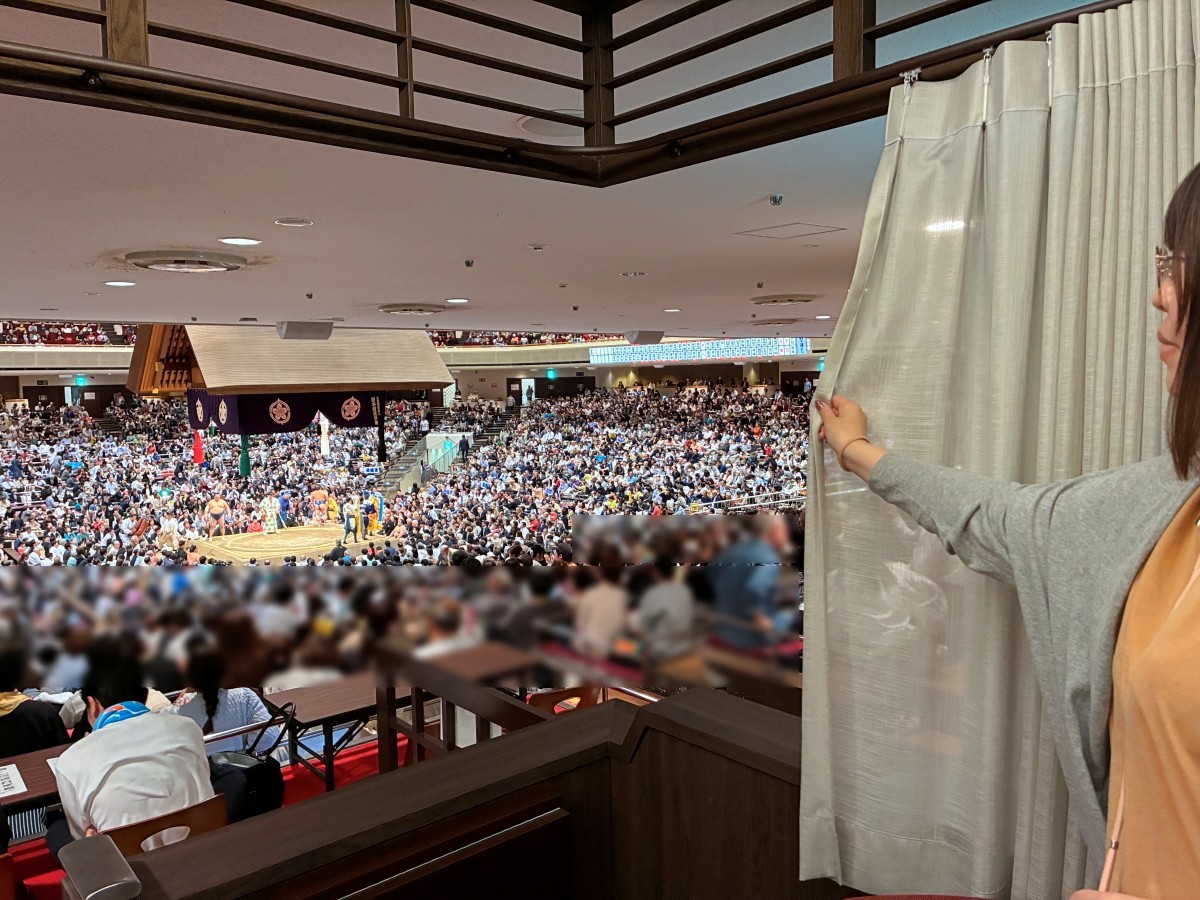
You can also draw the curtains to create a semi-private room.
The view from the seats is excellent, and you can feel the excitement and enjoyment of the audience around, which is truly thrilling.
You can hear people nearby calling out the names of their favorite sumo wrestlers in loud voices, or cheering "Waaaa!!!" at the outcomes. FUN! JAPAN editor also got caught up in the excitement along with the audience.
The sound of wrestlers colliding and the electrifying atmosphere of the arena are nothing like watching on TV — it’s intense enough to give you goosebumps. Everyone in the audience was fully enjoying the experience, and there was a strong sense of unity, as if everyone was sharing the same excitement and emotion in that moment.
JTB's "Grand Sumo Tournament Premium Seat" Recommended for Foreign Tourists!

For foreign tourists, we recommend using JTB's "Grand Sumo Tournament Premium Seat" package designed for international visitors.
One of the features of this tour is that it comes with an interpreter-guide (in English). The tour flow is as follows:
14:30~14:45
Meet the guide holding a sign that says "JTB Grand Sumo Tournament Premium Seat" at Ryogoku Station
↓
14:45~14:55
The guide will escort you to Ryogoku Kokugikan
↓
15:00~18:00
Sumo viewing. The guide stays nearby to assist with shopping or any other needs
↓
18:00
Tour ends, and the guide escorts you back to Ryogoku Station
If you wish to dine at nearby restaurants, you can also end the tour at Kokugikan (transportation or sending you to other shops or restaurants is not provided)
Sumo viewing is very popular among foreign tourists, but tickets often sell out quickly after release, making regular tickets hard to obtain. In such cases, be sure to check this “Grand Sumo Tournament Premium Seat” option
Grand Sumo Tournament Premium seat 👉Click here
How to Enjoy Watching: Match Flow and Manners
To fully enjoy sumo, it’s helpful to know the flow of the event and proper manners.
Match Flow
Sumo matches run from morning to evening with various divisions.
- Around 9:20 AM (Sandanme Division, Jonidan Division, Jonokuchi Division): You’ll see young wrestlers competing, possibly spotting future stars.
- Around 2:15 PM (Makushita, Juryo): Upper Makushita wrestlers have a chance to be promoted to Juryo if they achieve a winning record. The atmosphere in the venue starts to build up from the Juryo matches.
- Nakairi: This is the intermission between the Juryo and Makuuchi matches. Many people use this time to eat or shop for souvenirs.
- Around 3:40 PM in the evening (Makuuchi): Finally, the highest-ranked Makuuchi wrestlers appear! TV broadcasts often start from this time.
- Dohyoiri: This is the ring-entering ceremony where sekitori (wrestlers ranked Juryo and above) enter the ring wearing kesho mawashi (decorative aprons). It's very colorful and impressive.
- Yokozuna Dohy-iri: This is a special ring-entering ceremony performed only by Yokozuna (grand champions). There are two styles: Shiranui and Unryu. The solemn atmosphere is breathtaking.
- Torikumi: The actual wrestling matches begin!
- Yumitori-shiki(Bow-twirling ceremony): This is the closing ceremony where a skilled wrestler, on behalf of the winner of the day's final match, receives a bow and performs a dance.
Manners While Watching The Game
There are some peculiar manners when watching sumo wrestling.
Food and drink are OK! But be considerate of others
You can enjoy bento and drinks in Masu and chair seats. But please avoid strong-smelling or noisy foods.
Cheering Is Done With Clapping, Not Booing!
Applause and clapping are common ways to cheer. Some fans call out wrestlers' names or wave towels/fans with names. Never heckle or insult specific wrestlers.
Also, avoid raising cheering items above your head or unfurling large banners as they may obstruct others' views.
No Throwing Cushions!
Throwing zabuton cushions used to happen but is now strictly forbidden due to safety concerns.
Photography is OK! But no flash
Flash photography is prohibited as it may disturb wrestlers. Video recording may be restricted in some cases, so check beforehand.
Sumo Highlights: Glossary and Tips
To deepen and enjoy your sumo experience, we will introduce some highlights.
Breathtaking! Dohyoiri (Ring-Entering Ceremony)
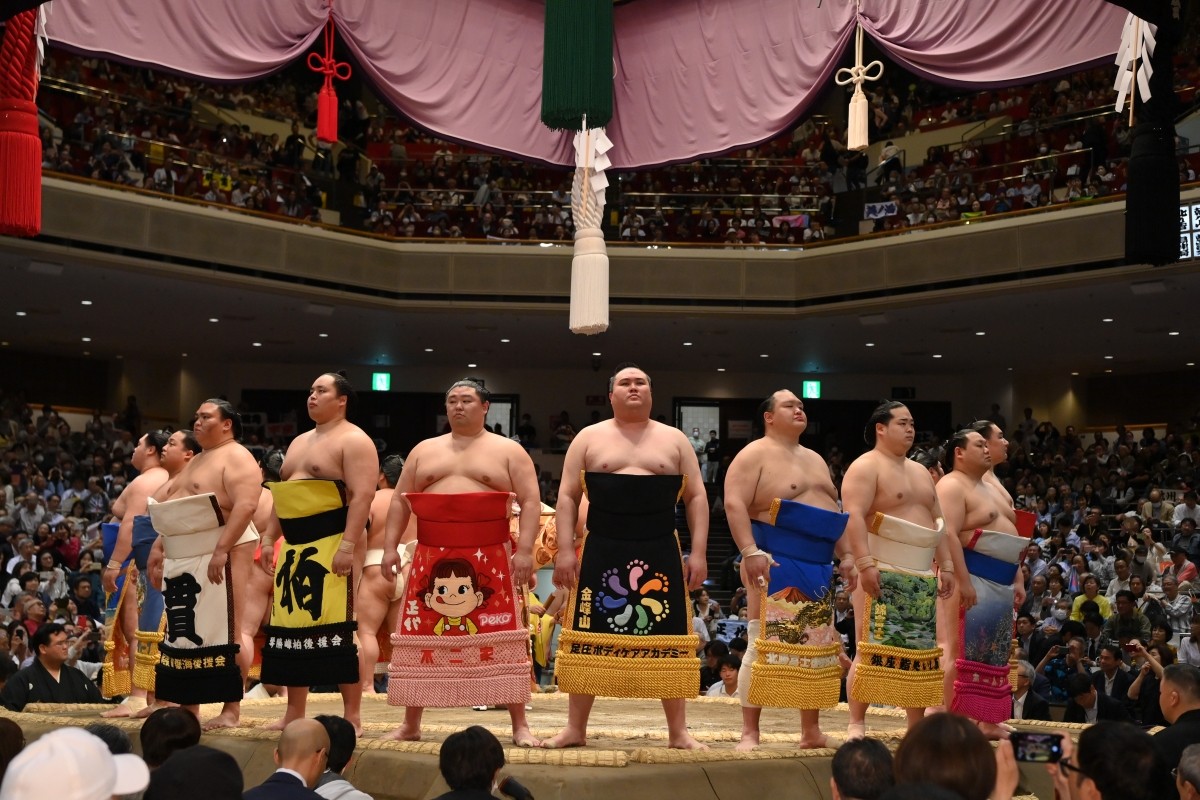
As mentioned earlier, the Dohyoiri is truly impressive. The sight of wrestlers in their vibrant kesho-mawashi(ceremonial aprons) majestically entering the ring is worth seeing on its own.
Get Your Favorite Wrestlers's "Oshi-Katsu" Goods Too! Souvenir Shops

You can freely enter and exit the venue during Grand Sumo bouts. Bento lunch boxes can be purchased at the souvenir shops in Ryogoku Kokugikan, but be aware that they sometimes sell out by lunchtime! Bentos produced by popular wrestlers are bestsellers.

"Oshi-katsu goods" (merchandise to support your favorite wrestler) with wrestlers' names printed on them were also very popular. Also, the Kokugikan's famous "yakitori" (grilled chicken skewers) are said to be delicious even when cold, so be sure to try them.
The shops close at 5:00 PM, so it's recommended to visit them no later than the Nakairi (intermission).
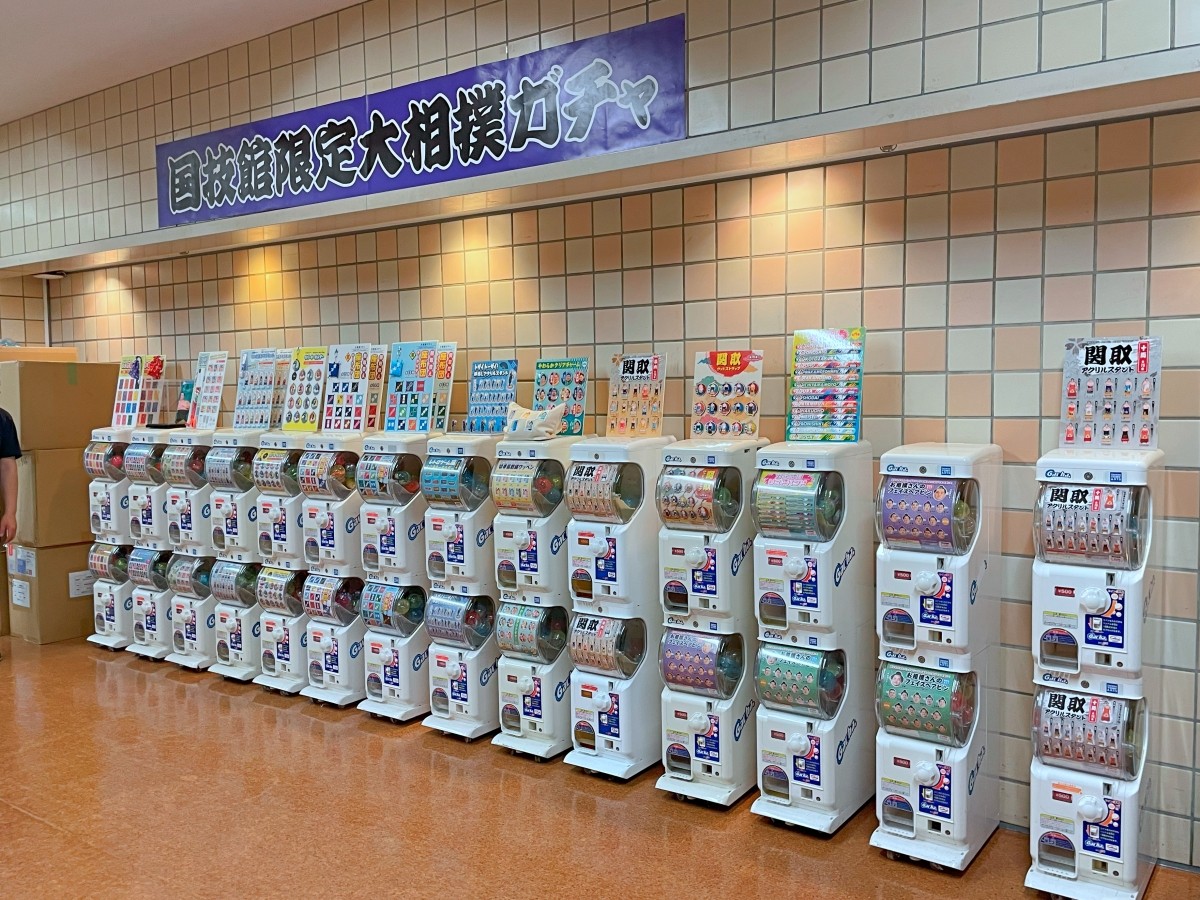
And, surprisingly, there are even Kokugikan-exclusive capsule toys!
These include wristbands with wrestlers' names printed on them and acrylic stands with wrestlers' images. Our Gen Z FUN! JAPAN staff were particularly amused by the "Sumo Wrestler Face Hairpins" which had wrestlers' photos attached!
Tastes As The Real Sumo Stable Flavor! Kokugikan Chanko
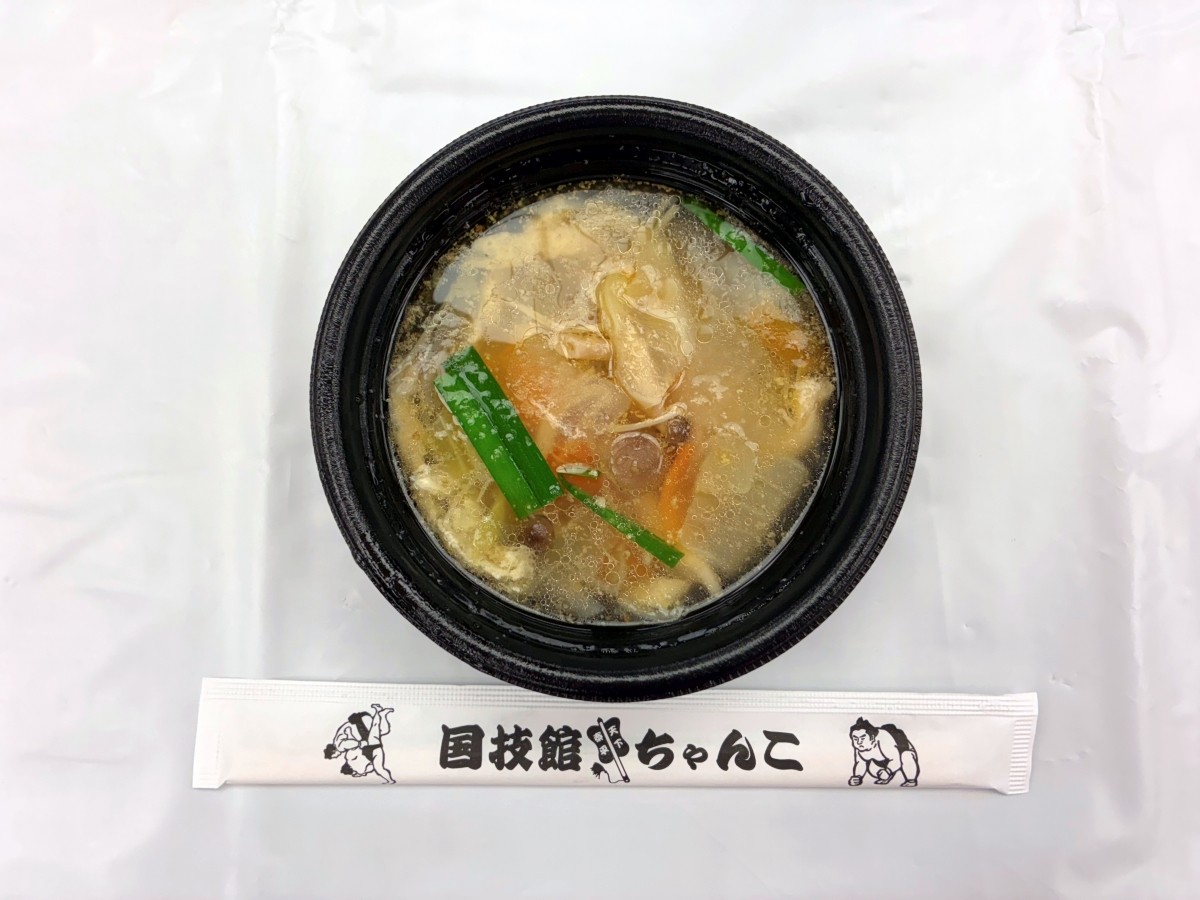
You absolutely must try the Kokugikan Chanko. It's sold on the basement floor of Ryogoku Kokugikan from 11:00 AM to 4:30 PM. It's made with recipes actually used in sumo stables and costs 500 yen per bowl!
A sumo stable is where wrestlers live and train, and chanko is the food served there. Chanko is typically a hot pot dish, and the recipes vary by sumo stable.
Since chanko is what wrestlers eat daily, it's packed with vegetables and meat, making it very nutritious. This time, it was the chanko from Sadogatake stable, and it had a strong peppery kick, giving it a ramen-soup-like punch yet a light taste.
Apparently, the chanko changes weekly, allowing you to enjoy recipes from various stables.
What is Yobidashi, Gyoji, and "East/West" in Sumo?
Yobidashi (usher)
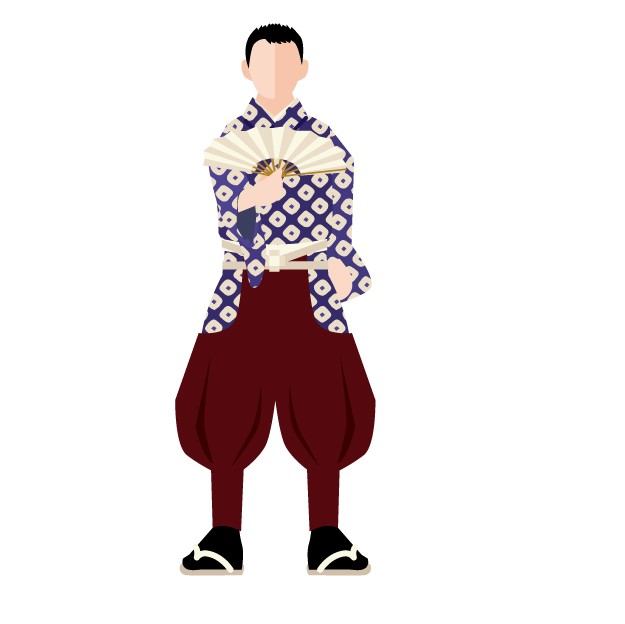
"Yobidashi" are the people whose role is to call the wrestlers into the ring. They announce the wrestlers' names with a unique melodic chant, building excitement in the venue.
Gyoji (referees)
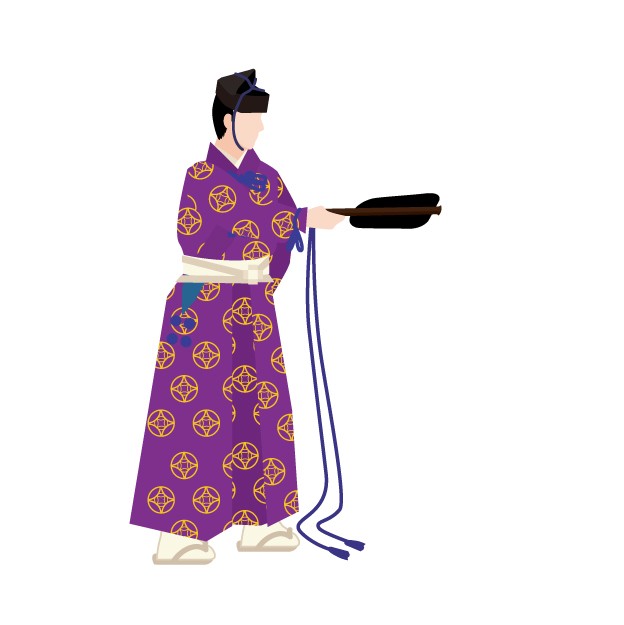
The "Gyoji" are the referees who judge the outcome of bouts in the ring. They hold a fan-like object called a Gunbai and officiate the wrestlers. The Gyoji's attire is very elaborate, reflecting their high status.
How To Watch "East and West"
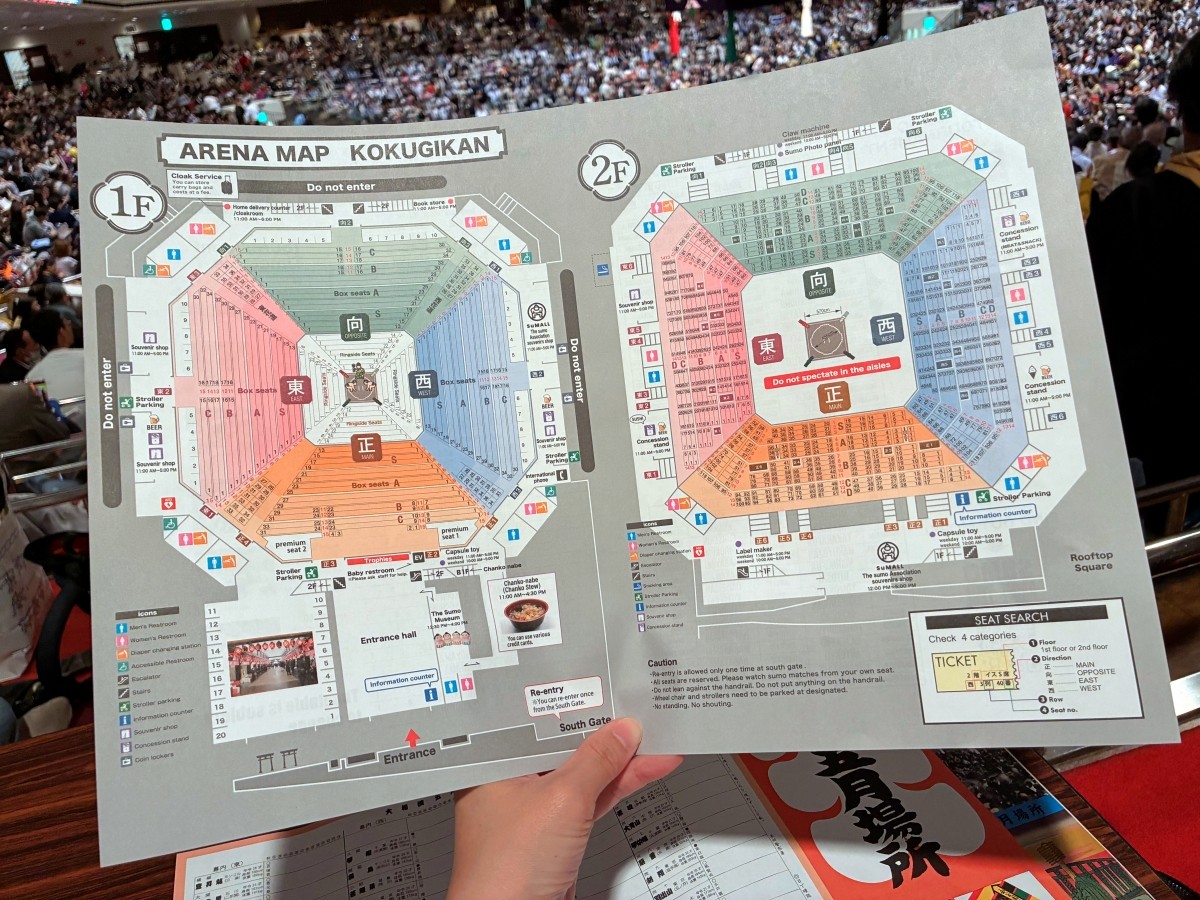
Entering from the front, the left side facing the dohyo is "East," and the right side is "West." This is determined by the orientation of the venue's front and may not correspond to actual compass directions. This information is also included in the pamphlet distributed on the day.
Types of Techniques and Highlights
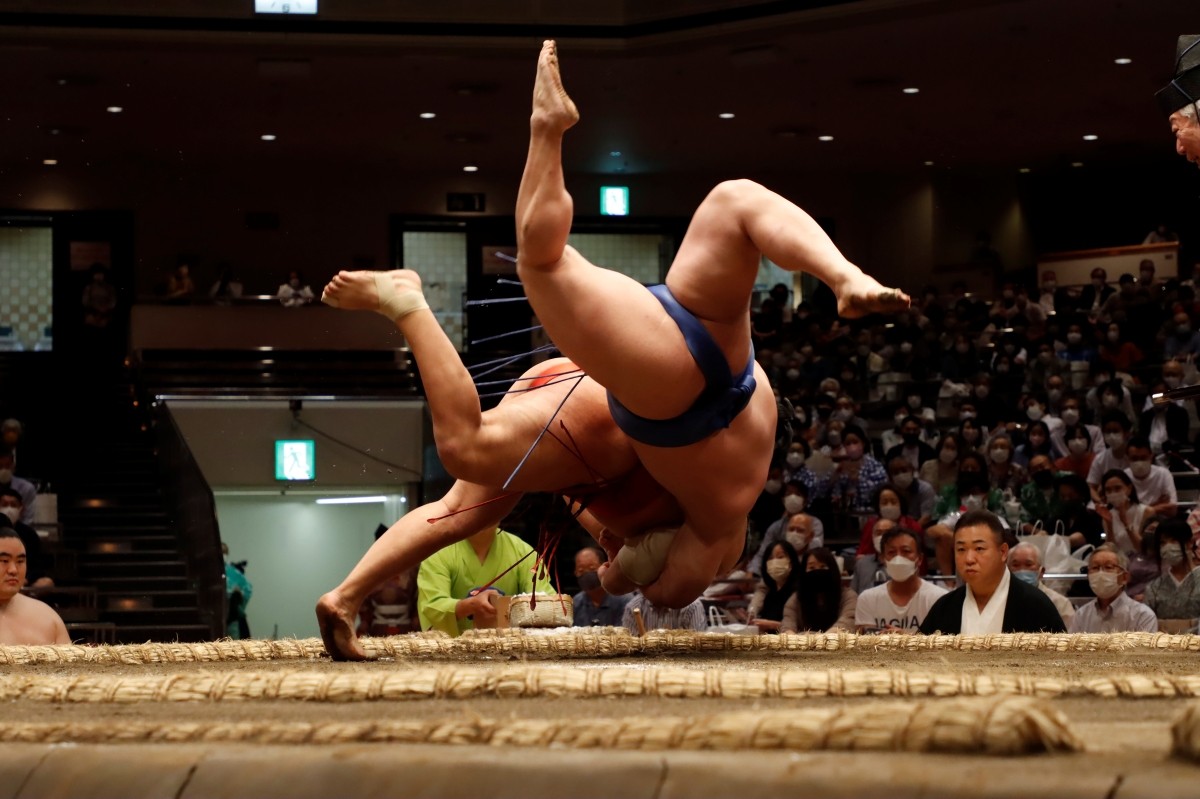
Sumo has various winning techniques called "82 kimarite." While you might have a strong image of "oshidashi" (frontal push out), knowing a few basic techniques like "yorikiri" (frontal force out) or "nage" (throws) where the opponent's mawashi is grabbed and they are thrown, as well as some wrestlers' signature moves, can make watching sumo even more enjoyable.
Let's Go Watch Sumo!
Sumo is a profound world where Japanese history and culture come alive. The physical and mental clashes of the wrestlers and the unique excitement that envelops the venue will surely give you an unforgettable experience once you've experienced it.
Please try to experience the power and excitement of grand sumo tournaments in person!
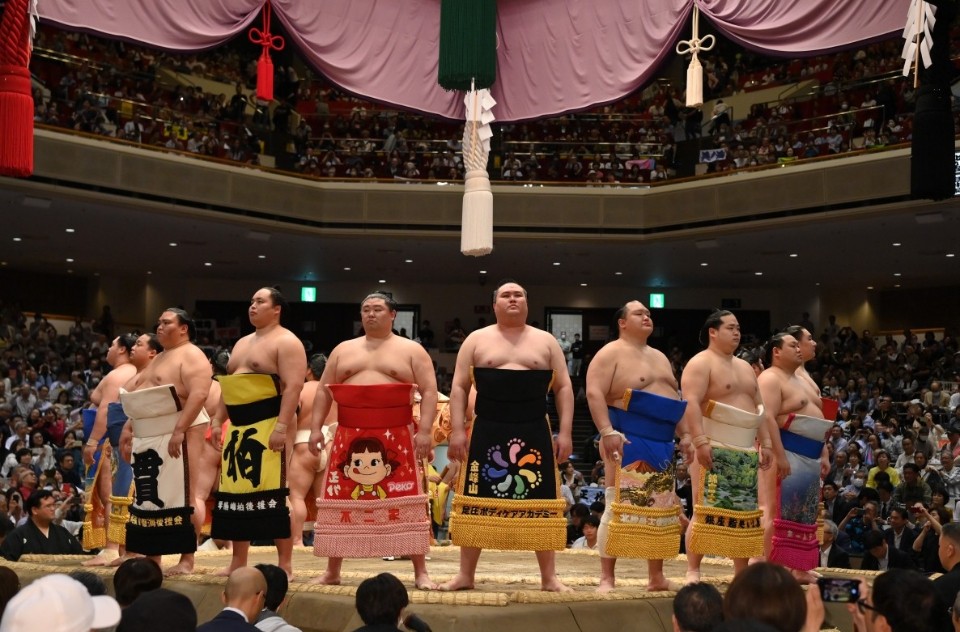
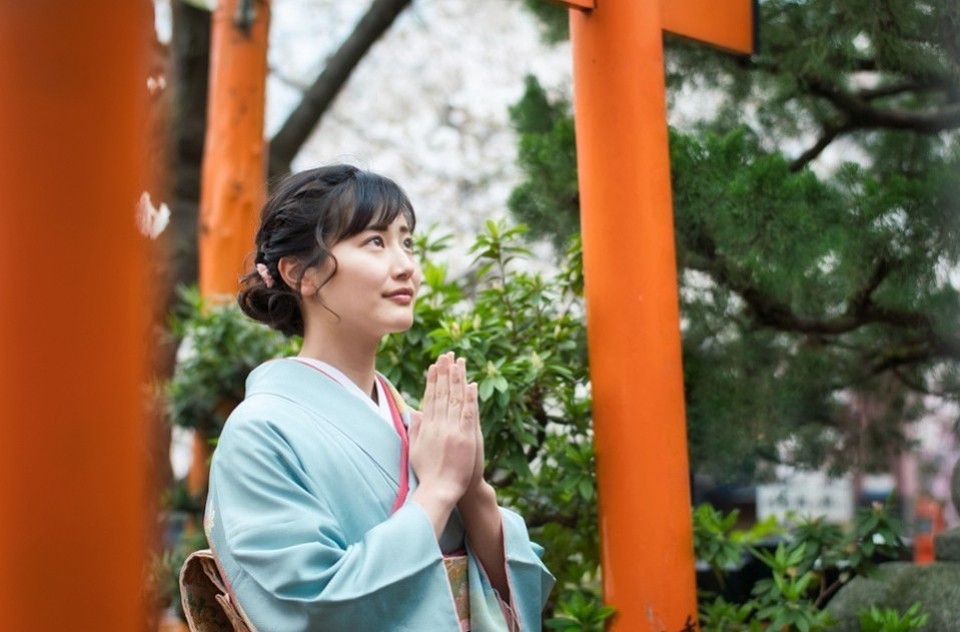
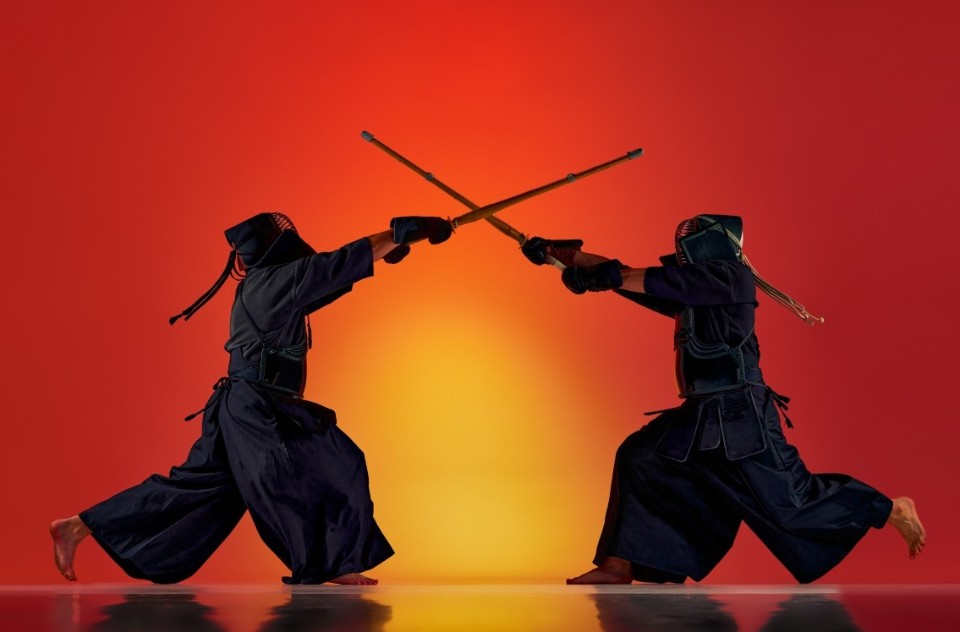
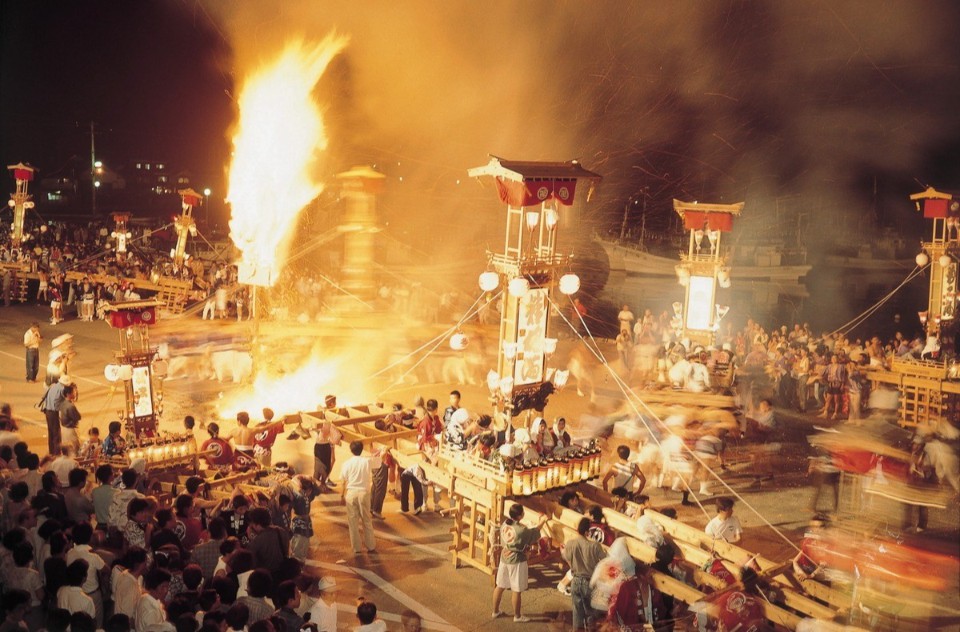
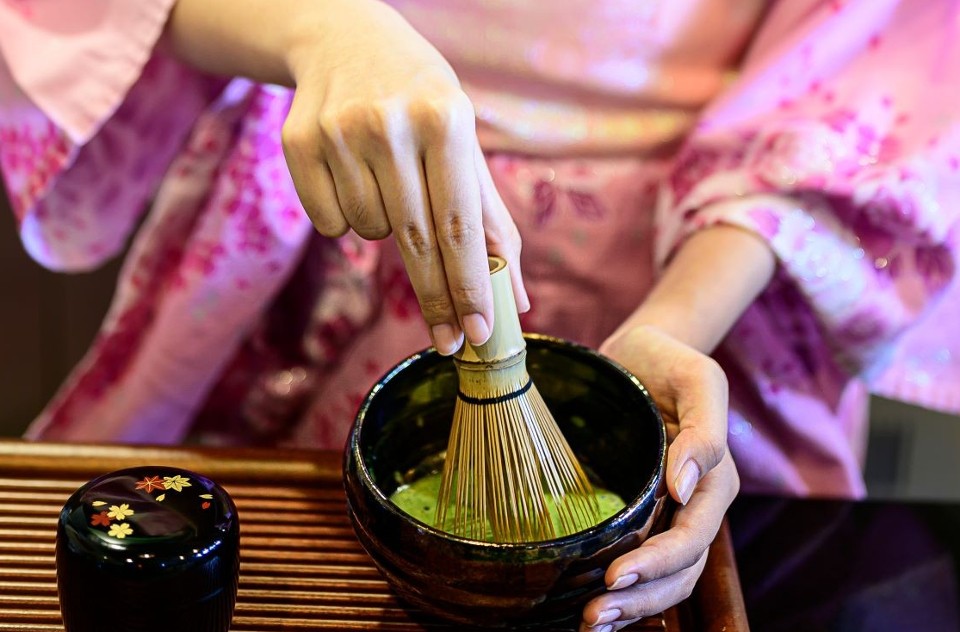
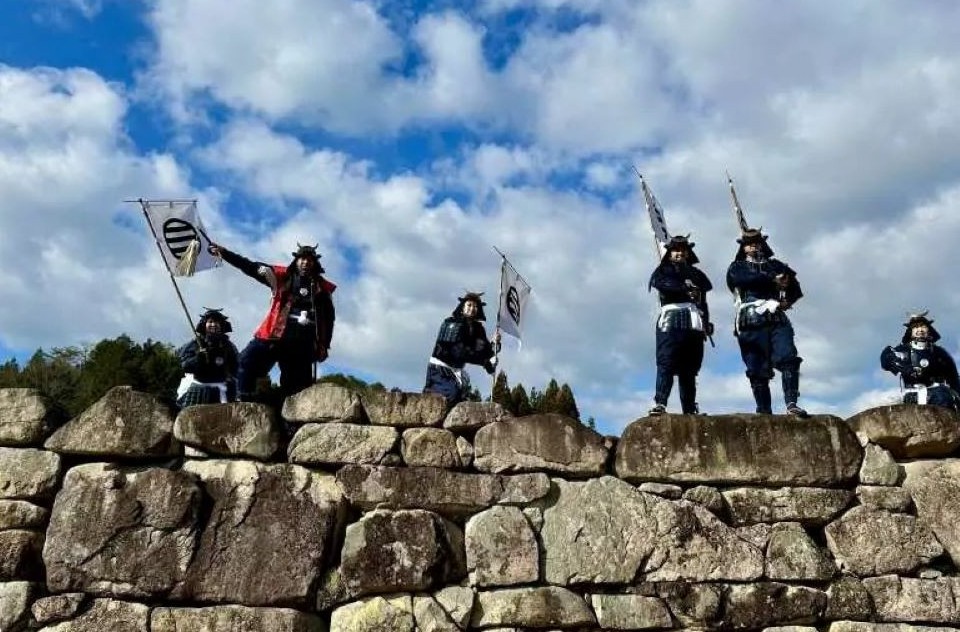
Comments